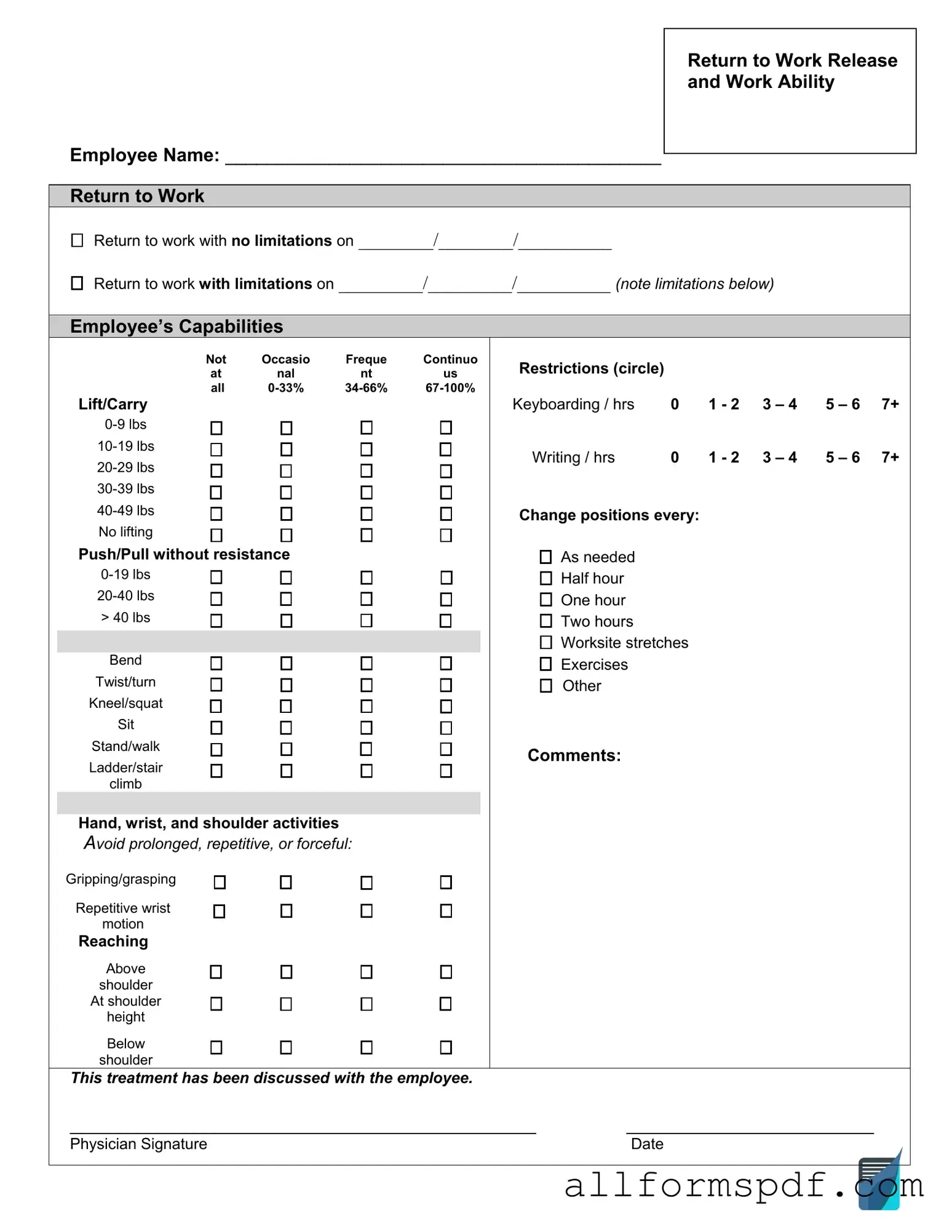- Misconception 1: The Work Release form is only for people with criminal records.
This is not true. While it is often associated with individuals in the criminal justice system, anyone seeking to take time off from work for specific reasons, such as medical or personal matters, may benefit from a Work Release form.
- Misconception 2: A Work Release form guarantees job protection.
Completing a Work Release form does not automatically protect your job. Employers have different policies, and it is essential to understand your company's specific rules regarding job security during leave.
- Misconception 3: You can use a Work Release form for any type of absence.
Work Release forms typically have specific purposes, such as medical leave or jury duty. Not all absences qualify, so it’s crucial to verify the acceptable reasons for using the form.
- Misconception 4: Submitting a Work Release form is a lengthy process.
In many cases, submitting the form is straightforward and can be done quickly. The time it takes to process the request may vary by employer, but it is often more efficient than people think.
- Misconception 5: A Work Release form must be submitted weeks in advance.
While it is advisable to give as much notice as possible, many employers will accept forms with shorter notice, especially in emergencies. Always check your company's policy for specific guidelines.
- Misconception 6: You cannot return to work after taking a Work Release.
This is false. The purpose of a Work Release form is to allow individuals to take necessary time off while ensuring they can return to their positions afterward, provided they follow the proper procedures.
- Misconception 7: All Work Release forms are the same.
Work Release forms can vary significantly between employers and states. Each organization may have its own requirements and procedures, so it is essential to use the correct form for your specific situation.
- Misconception 8: You don’t need to provide any documentation with the Work Release form.
Many employers require supporting documentation, such as a doctor's note or proof of jury duty, to process the Work Release request. Always check what is needed to avoid delays.
- Misconception 9: A Work Release form is a permanent leave of absence.
In reality, a Work Release is usually temporary. It is intended for short-term absences, not long-term employment changes. Understanding the intended duration is crucial.
- Misconception 10: Once a Work Release form is submitted, you cannot change your mind.
Individuals can often withdraw their request or modify it, depending on the employer's policies. Communication with your employer is key if circumstances change.
